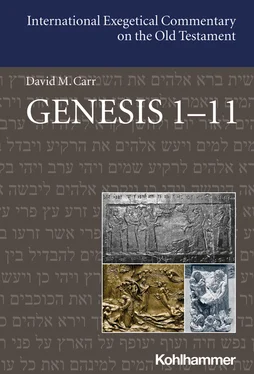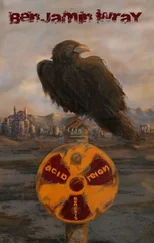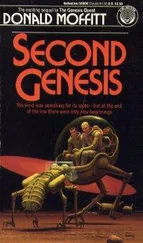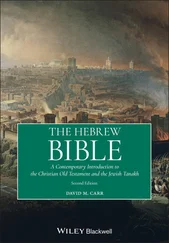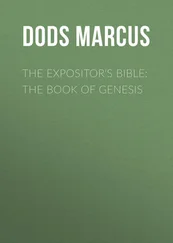1 ...6 7 8 10 11 12 ...27 These issues with etiologies in Gen 1–11 are the first of several indicators suggesting that the earliest non-P primeval history did not have a flood narrative. Instead, like the Mesopotamian creation traditions discussed above (most of which also did not feature a flood), the earliest non-P primeval history told a complicated story of early humans and God’s relations with them. Though this story encompassed many of the non-P materials (aside from the non-P flood narrative) in Gen 2:4b–9:27, it revolved particularly around three stories featuring the three major dyads of a primary family within a patriarchal context: male-female (Gen 2–3), brother-brother (Gen 4:1–16), and father-sons (Gen 9:20–27). It likely concluded with a couple of notes in Gen 10:15, 21 about the descendants of Noah’s sons—Canaan’s fathering of the ancestors of ancient Phoenicians (Sidon) and inland Hittites (Het) and Shem’s fathering of a vaguely defined group, “all of the sons of Eber,” that appears to have been intended as a primeval counterpart to the later concept of Hebrews. In this way the non-P primeval history did not just provide a universal account of human origins. Like the Mesopotamian primeval origin accounts surveyed above, it also provided an etiology of its audience’s own social identity (Hebrews here as “sons of Eber” in Gen 10:21) along with etiological background for the early giant inhabitants of pre-Israelite Canaan (Gen 6:1–4) and Judah’s most immediate neighbors—Kenites (Gen 4:1–24) and Canaanites (Gen 10:15). Only later was this early primeval history expanded through the addition of the non-P Noah-flood narrative and related materials that transformed Noah’s sons into the fathers of post-flood humanity and added materials pertaining to Mesopotamian kingship and major cities (e.g., Gen 10:8b–12; 11:1–9). Notably, it is these potential later expansions of non-P materials that show the most potential links to non-P materials about Israel’s ancestors that follow, both the pre-Priestly flood narrative (Gen 6:5–8:22*) showing parallels to the story of Lot’s rescue from Sodom (Gen 19) and the Babylon story (Gen 11:1–9) bridging to the outset of the Abraham narrative (Gen 12:1–4a, 6–8). This suggests that an originally independent non-P primeval history may have been expanded not just with a flood narrative and related materials (e.g., the Babylon story in 11:1–9), but that the flood expansion was the first part of a lengthening of that primeval history (originally ending with Noah and his [grand]sons) into a narrative of primeval and ancestral origins that included at least some non-P ancestral materials across the rest of Genesis.
I return to these ideas in the following commentary. 48For now it is important to anticipate this theory because this diachronic insight into the secondary character of the non-P flood narrative (and related materials) opens new horizons for the interpretation of the first chapters of Gen 1–11. For example, the above-noted reading of the Garden of Eden as a story of original sin is grounded in part on a retrospective reading of Yhwh’s absolute judgment on human evil at the outset of the flood (Gen 6:5–7) back into Gen 2–3. 49Recognizing the secondary character of these non-P flood materials allows one to more clearly perceive the more complex, ambivalent picture of humanity and God in Gen 2–3 and related texts. At the same time, the exegesis of the flood narrative and related texts may gain precision through recognizing their distinction from and yet relation to the earlier non-P materials that they expand upon.
Dating the non-P elements in Gen 1–11Though this distinction and relative dating of two overall layers in the pre-P materials of Gen 1–11—an earlier, independent primeval history (without flood narrative, etc.) and later expansion of it by a flood narrative and other materials—would be quite exegetically significant, the absolute dating of these layers to specific times is less so. After all, in contrast to time-linked texts like literary prophecies, the stories in Gen 1–11 generally refer to what were seen as lasting realities in the world of their audience. They do not purport to interpret or predict historical developments. That said, there is some evidence to link the above-described expansion of the primeval history to the Neo-Assyrian or a later period. The Neo-Assyrian and later periods are the most likely times for the kind of specific reflections of Mesopotamian literary traditions (e.g., the flood narrative as seen in the SB Gilgamesh epic) and realia (e.g., an unfinished, brick-covered tower in Babylon in 11:1–9) that occur in materials that seem associated with this expansion layer. In addition, the trauma of the Neo-Assyrian period provides a plausible background for the interruptive introduction of the flood narrative, with its new depiction of absolute human evil (Gen 6:5; 8:21), into an earlier non-P primeval history that lacked such an emphasis.
Such considerations around dating, however, must remain tentative and pertain especially to the expansion of the non-P primeval history. The earlier non-P primeval history provides fewer indicators for absolute dating in a particular historical period. To be sure, it contains some relatively archaic linguistic isoglosses, such as the qal passive (Gen 4:26; 6:1; 10:21) and the rendering of 3m.s. suffixes with ה in Gen 2:15 and 9:21, that would suggest a dating toward the early period in the development of the classical Hebrew dialect. 50Otherwise, however, the primary evidence for dating this earlier primeval history is the way it seems to be presupposed in the expansion of it with a flood narrative and related texts (e.g., Gen 11:1–9 along with its likely sequel in 10:8b–12), which in turn shows signs of being composed in the Neo-Assyrian period.
In sum, this initial diachronic picture yields the following picture of earlier synchronic layers of the pre-Priestly portions of the primeval history, with areas of particular uncertainty marked by a question mark (?):
| Initial Independent Primeval History |
One or more pre-Priestly (Neo-Assyrian period?) layers of expansion |
| The first human couple and first brothers 2:4b–4:26 |
|
| The birth of Noah (5:29), ?interlude on divine-human pairings (6:1–4), ?introduction of Noah’s three sons (9:18*; Shem, Japheth, Canaan), Noah’s discovery of viticulture and inebriating drink as a “man of the ground”(9:20–21a) |
Addition of pre-Priestly flood narrative, transforming Noah into a flood hero (e.g., Gen 6:5–8 … 8:20–22)Addition of “Ham” (and “who came out of the ark) to Gen 9:18 and “Ham” to 9:22 |
| Story of Noah and sons: failure of filial obligation by Canaan versus fulfillment of filial obligation by Shem and Japheth (9:21b–24), resulting in separate destinies of Shem and Japheth versus Canaan (9:25–27) |
(?now missing report of Ham fathering Egypt and Canaan) |
| Canaan fathering Sidon and Heth (Gen 10:15) |
Addition of Egypt’s fathering descendants (Gen 10:13–14) and (? possibly pre or post-Priestly) additional descendants of Canaan and note of their settlement (Gen 10:16–19) |
| Conclusion with Shem as „father of all the sons of Eber [~Hebrews] (Gen 10:21) |
?Story of the dispersal of all humanity from Babylon in Shinar across the whole (post-flood) earth (Gen 11:1–9, also 9:19) |
|
?Notes on Nimrod, including his initial kingship in Babylon in Shinar and departure from there to construct Neo-Assyrian capitals (Gen 10:8b–12) |
|
[?missing bridge (cf. P in Gen 11:10–26) and then continuation with stories about Abraham and other ancestors of Israel (Gen 12:1–4a, 6–8 and other pre-P materials in Gen 12ff.)] |
Layers and Dating in the Priestly Levels of the Primeval History
Читать дальше
